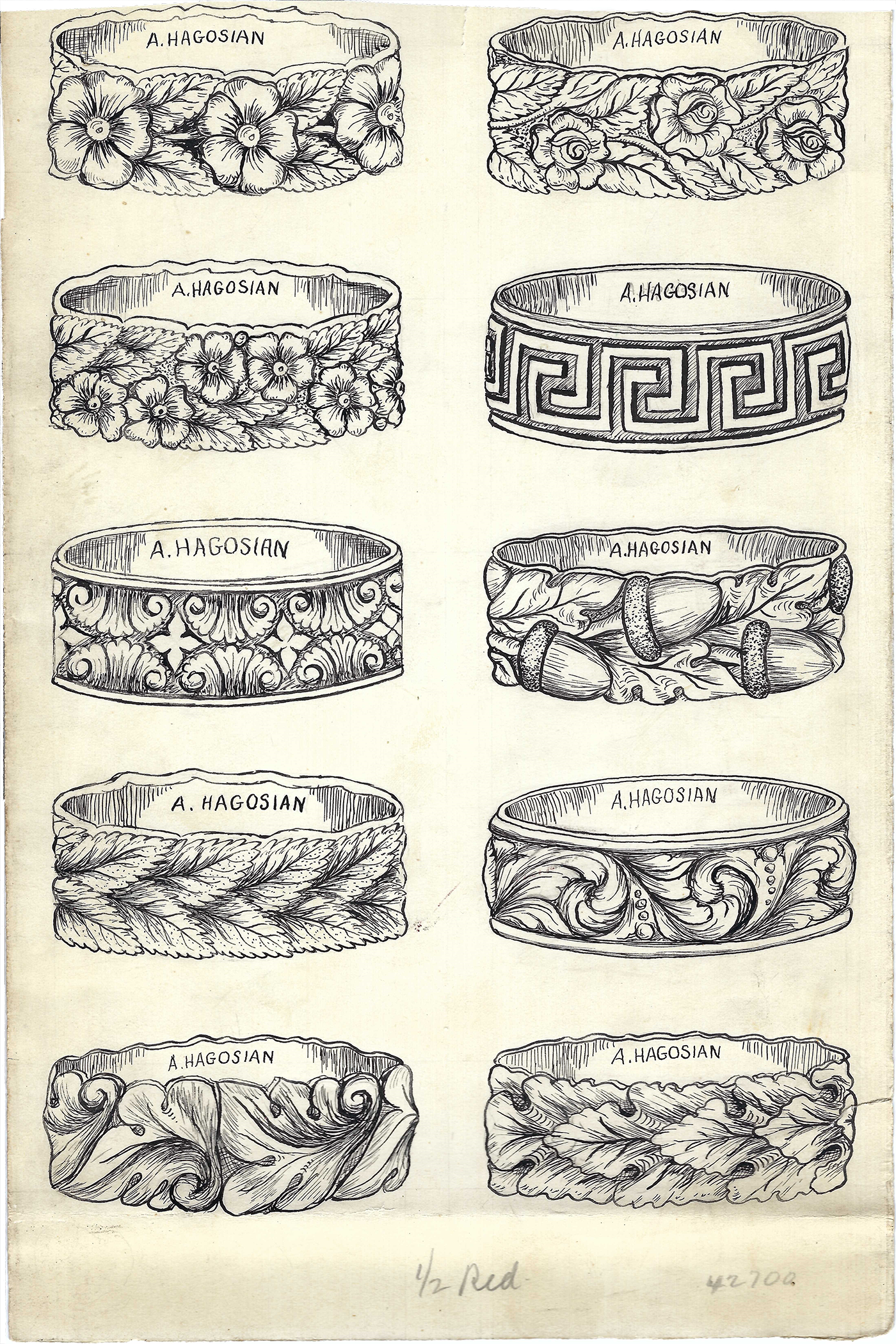

Legacy of A. Hagosian & Son
Nestled in a legendary hotel, a jeweler and his son sculpt works of art from molten gold. Classical music flows mellifluously; curious onlookers peer through the window. A permeable state of longing seeps in the warm, sweet cognac shared between artisan and client at the culmination of a successful collaboration. The year is 1930 on Powell Street’s Sir Francis Drake Hotel in San Francisco. Here, in Aram Alexander Hagosian and son John Aram’s atelier, life moves slowly, and stories are told carefully. The renowned jeweler had a woeful yet remarkable one to share. His story involved a difficult journey filled with immense loss, perilous escapes, and perseverance.
Aram began learning his craft at the age of eight in his home country of Armenia. As a young apprentice, he carved golden wedding rings. After escaping to Czarist Russia during the Armenian massacres, he worked as an engraver crafting jeweled saber handles for Cossack soldiers. Following years of war and revolution, Aram and his young wife Nevart, who were each informed that the other was dead, were reunited by chance in Alexandropol. They left for Constantinople to procure a visa to America. After numerous attempts, Aram finally secured their entry by producing a handful of his rings to demonstrate he had a valuable craft to contribute to his new country. The couple departed Marseilles on the French line, S.S. Roussillon, bound for New York. En route, amidst a heavy storm, Nevart gave birth to their first son, John Aram, in the captain’s cabin. After one month at sea, the Hagosian family reached Ellis Island in October of 1920.
Aram quickly secured employment as a master craftsman at a prominent jewelry house in New York, which led him to found his own business a decade later in San Francisco. He settled his family in the bustling city, where his fourth child was born. In the Sir Francis Drake Hotel, Aram opened his atelier to a country recovering from the Great Depression. He had perfected an ancient lost wax casting process of jewelry making and antique finishing. Aram taught his firstborn son the trade between schoolwork. John learned how to design and carve intricate leaf and flower motifs onto golden rings, just as his father had as a young boy in Armenia. Together, as father and son, they developed a signature style. Admirers of their distinctive jewelry, notably Cary Grant, Gregory Peck, Zsa Zsa Gabor, and the wife of a railroad president, became instrumental in the Hagosians’ rise to fame. Gabor requested a price to purchase the store for her two daughters; John declined the actress’s offer, noting that the family legacy was not for sale. During World War II, the business continued to thrive as sales rocketed in custom wedding bands for men proposing to their sweethearts before they departed.
Aram and Nevart never returned to Armenia after losing nearly the entirety of their families. In homage to his beloved, adopted country of America, he created an 85-piece collection of jewel-encrusted gold sculptures that took four decades to complete. In 1973, he presented the collection to the Daughters of the American Revolution in Washington D.C. as a gift to a nation that saved and supported his family. Aram received the DAR Americanism Medal that year and passed away a few years later at the age of 85—having fulfilled his life’s work. John succeeded as the master goldsmith and ran the business independently until the birth of his daughter, Alexis Alexandra, in 1982. After closing the store, he continued to create custom work for special, longtime customers. As a young girl, Alexis observed as her father engrossed himself in floral research for clients. She watched him search for specific flowers before composing a unique design, leaving sketches around the home. Since closely absorbing his devotion to jewelry-making, Alexis melded her family trade, Armenian lineage, and the story of her father and grandfather into a new vision—Alexis Alexandra.

